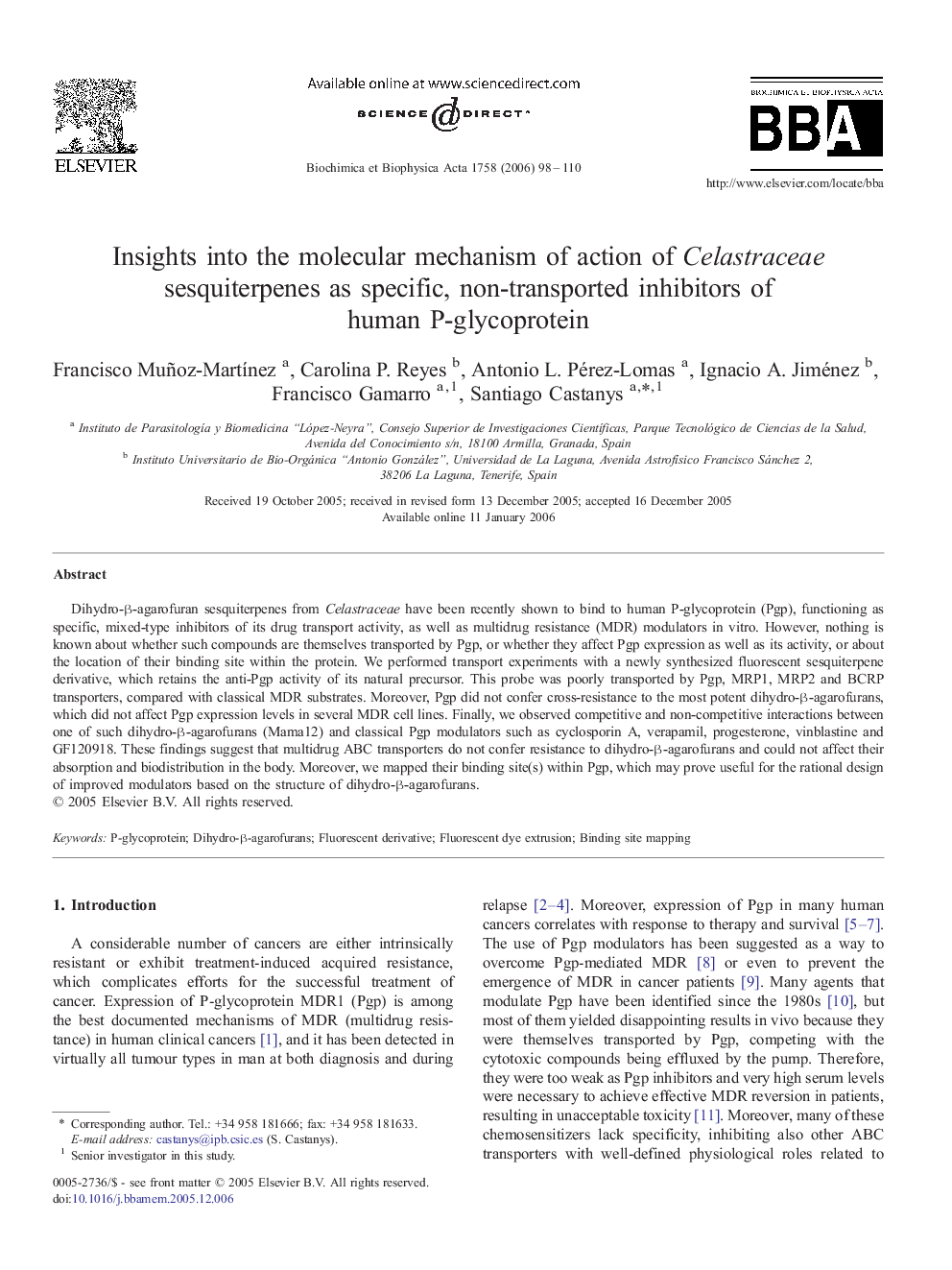| Article ID | Journal | Published Year | Pages | File Type |
|---|---|---|---|---|
| 1946204 | Biochimica et Biophysica Acta (BBA) - Biomembranes | 2006 | 13 Pages |
Dihydro-β-agarofuran sesquiterpenes from Celastraceae have been recently shown to bind to human P-glycoprotein (Pgp), functioning as specific, mixed-type inhibitors of its drug transport activity, as well as multidrug resistance (MDR) modulators in vitro. However, nothing is known about whether such compounds are themselves transported by Pgp, or whether they affect Pgp expression as well as its activity, or about the location of their binding site within the protein. We performed transport experiments with a newly synthesized fluorescent sesquiterpene derivative, which retains the anti-Pgp activity of its natural precursor. This probe was poorly transported by Pgp, MRP1, MRP2 and BCRP transporters, compared with classical MDR substrates. Moreover, Pgp did not confer cross-resistance to the most potent dihydro-β-agarofurans, which did not affect Pgp expression levels in several MDR cell lines. Finally, we observed competitive and non-competitive interactions between one of such dihydro-β-agarofurans (Mama12) and classical Pgp modulators such as cyclosporin A, verapamil, progesterone, vinblastine and GF120918. These findings suggest that multidrug ABC transporters do not confer resistance to dihydro-β-agarofurans and could not affect their absorption and biodistribution in the body. Moreover, we mapped their binding site(s) within Pgp, which may prove useful for the rational design of improved modulators based on the structure of dihydro-β-agarofurans.
